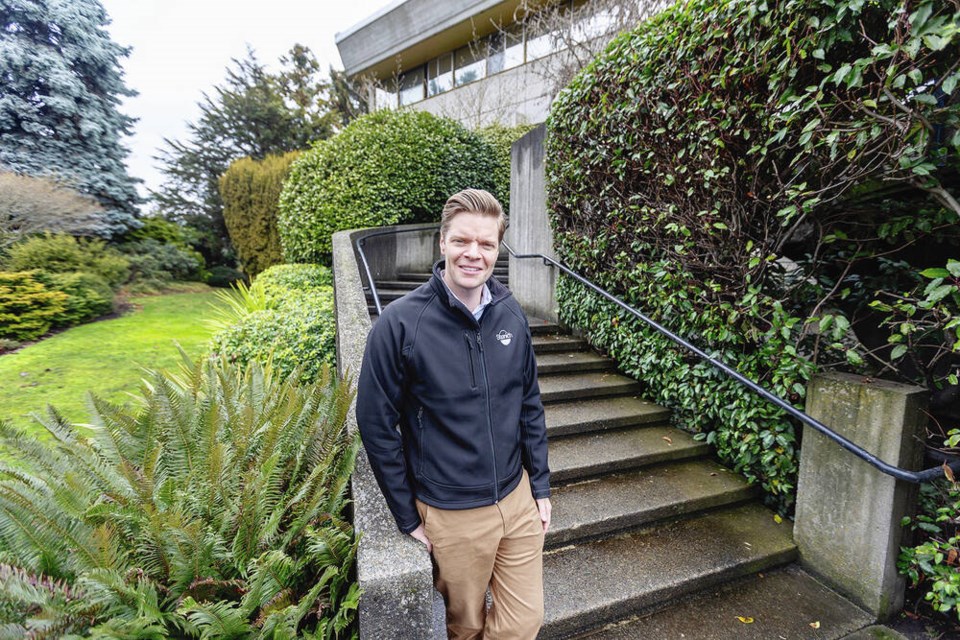If the theme of the 2022 municipal election was change, someone forgot to tell Saanich.
While seven of the region’s 13 municipalities saw new mayors elected and a slew of fresh faces occupying council seats, Saanich opted for the familiar.
The Island’s most populous district, Saanich elected a known commodity in Dean Murdock — a former councillor — as mayor over incumbent Fred Haynes, and only added two new faces to the ranks of councillor as Mena Westhaver and Teale Phelps Bondaroff joined incumbents Colin Plant, Karen Harper, Susan Brice, Judy Brownoff, Nathalie Chambers and Zac de Vries around the council table.
But even Saanich, which for years has been criticized — mainly by the development industry — for being slow to change and get things done, could only withstand for so long the demand for a new way of doing business.
In his end-of-year address, Murdock acknowledged change has come and will continue to shape Saanich through the rest of this council’s four-year term.
But he suggested the district won’t just roll over and let the forces of change — demand for housing, improved amenities and streamlined municipal processes — take control.
Murdock stressed the district’s priorities of creating homes that people can afford, more walkable and accessible neighbourhoods, establishing more transparent processes while addressing climate change and improving natural areas would continue.
He acknowledged there are new rules imposed by the province around housing that will speed up the pace of change and drag the district along for the ride.
“We’re committed to doing this and to meeting the ambitious housing targets mandated by the provincial government,” he said, noting the district will have to triple the number of development permits approved each year to meet the target of 4,610 new homes over the next five years.
In an interview, Murdock agreed Saanich is going to have to move faster and farther and carry a little more weight because it has traditionally been slow to respond to the need for housing.
“There’s been a recognition that there’s more that needs to be done and that Saanich ought to be a place where people can find a home regardless of income or stage of life,” he said. “It’s a very large municipality with a very large urban and suburban environment. We have all of the conditions to be a place where more homes can be created for everyone.
“The reality of past practice has been that we haven’t been stepping up to meet that increasing demand and challenge. And so we’re now having to escalate those efforts,” he said.
But that is going to be met with resistance.
Even before the province handed down the housing targets and introduced legislation to streamline the housing approval process — all but eliminating public hearings for smaller developments and allowing for more infill housing and multi-units on residential sites — some Saanich neighbourhoods made it clear they were uneasy with increased density.
During the council’s first few months in office, residents near Swan Lake came out in droves to protest a small townhouse project that was to replace three single-family homes. The project was ultimately approved but the public hearing was drawn out for weeks.
There have been similar concerns expressed over density in other projects, though they have been muted.
“Change is always challenging and council is very alive to that. This is going to be something where people will be frustrated by how quickly they begin to see their neighbourhood evolve,” Murdock said.
“But it’s very clear we have to do more to create more homes. I think what’s important about that is that we do it in a way that continues to contribute to the livability and quality of life of the place.”
So while housing will remain a top priority, Murdock said the goal is to ensure roads and other transportation infrastructure keep pace, that amenities keep pace and that the district finds balance between development and ensuring Saanich’s livability.
Other than the province’s new housing legislation there’s really nothing radical in Saanich’s policies and plans.
The only thing that may surprise people is the pace at which things will start to move, which any local developer would argue is novel for the district.
Murdock said he’s been pleased at how quickly the new council came together and established shared priorities — affordable housing, walkable neighbourhoods, addressing climate change, restoring natural areas, strengthening the economy and being more accountable and transparent.
He said the council has been disciplined and focused on those priorities, which were largely the same as the previous council’s.
But not everything inherited from the previous regime has been as welcome.
The new Animals Bylaw, for example, dominated council for several weeks and ripped apart the district over where dogs could be off leash in parks.
And even as it evolves, Saanich will always be Saanich.
While the province has said no more public hearings and delays on small- and mid-size development projects, Murdock wants to ensure public input remains a big part of what council does.
“So in order for us to continue to respond to the concerns of residents and the input that people have on how their neighbourhoods will look, we need to make sure that we have a very robust process around setting that up so when those development applications come along, they are well aligned with that vision,” he said.
That means more input in the early phases and ensuring official community plan updates, which set the table for future growth, gather more of that kind of neighbourhood input.
As for speeding up processes and approvals, the district has already undertaken work to increase capacity within its departments to handle more applications and made technology investments to improve efficiency.



